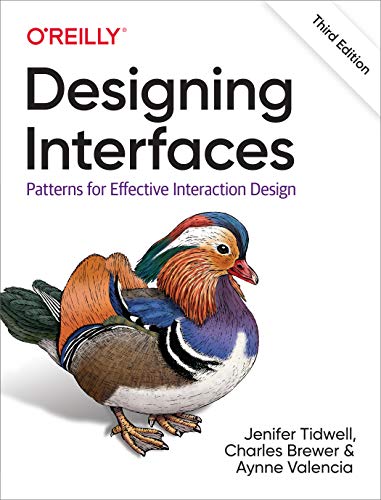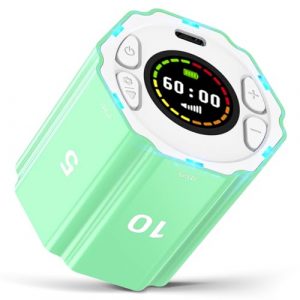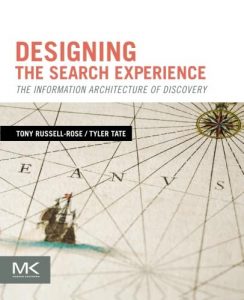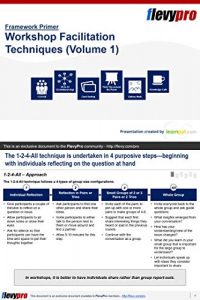Unlocking the Secrets of Effective User Interface Design
User interface (UI) design plays a pivotal role in the success of modern technology products. As our interactions with devices become increasingly complex, the need for effective and intuitive UI patterns becomes paramount. Designers and developers must constantly educate themselves on the best practices in the field to ensure user satisfaction and engagement. In this blog post, we’ll explore some must-have books that delve into user interface patterns, providing insights, strategies, and even warning against common pitfalls.
Whether you’re a seasoned designer or a newcomer to the field, the books featured here will guide you through the intricacies of user-centered design. Let’s dive into these invaluable resources and discover how they can elevate your approach to interface design!
1. Designing Interfaces: Patterns for Effective Interaction Design
“Designing Interfaces: Patterns for Effective Interaction Design” by Jenifer Tidwell is a cornerstone resource for anyone looking to perfect their design skills. This book presents a comprehensive overview of the best patterns used in UI design, making it a necessary addition to any designer’s library. Tidwell captures practical design patterns and, more importantly, illustrates when and how to use them effectively to create interfaces that are not only visually pleasing but also intuitive and user-friendly.
The book’s structured approach allows readers to easily navigate through various sections, focusing on elements like controls, navigation, and layout patterns that enhance user experience. The engaging examples and illustrations make complex concepts more digestible, making it suitable for both beginners and experienced designers. This book is a must-have for anyone eager to refine their skills and design meaningful interactions.
2. Designing the User Interface: Strategies for Effective Human-Computer Interaction
“Designing the User Interface: Strategies for Effective Human-Computer Interaction” by Ben Shneiderman and Plaisant explores the foundational concepts of user-centered design. This powerful book combines research and practical application, offering strategies that are applicable in real-world scenarios. Shneiderman provides crucial insights into designing user-friendly systems that cater to diverse user needs and contexts.
With its rich content, the book elaborates on user interface principles, supporting an analytical approach to solving design problems. This blend of theory and practice equips designers to create interfaces that individuals find easy and enjoyable to use. Readers will appreciate the thorough explanations of human behavior and its critical role in interface design.
3. The Glossary of User-Interface Patterns (Glossary Series)
For anyone in the tech industry, the glossary style of “The Glossary of User-Interface Patterns” offers a refreshing take on UI design. This book serves as a handy reference for designers seeking quick insights and definitions of various patterns used in user interfaces. Its straightforward format enables rapid learning and easy recall of important design concepts.
This resource simplifies the process of developing an understanding of different interface patterns and helps apply them efficiently in projects. It’s beneficial for designers of all levels who want to enhance their design vocabulary and framework.
4. Voice User Interface Design
As voice technology continues to gain traction, “Voice User Interface Design” is an essential read for those interested in this evolving domain. This book dives into creating effective voice-based interfaces, a crucial skill in the modern tech landscape. The author emphasizes the unique challenges and solutions that come with designing for auditory experiences as opposed to traditional visual interfaces.
With actionable insights and guidelines, this book breaks down the intricacies of voice interactions, helping designers create seamless, user-friendly voice applications. It prepares readers to accommodate an increasing segment of the market that is turning to voice as their primary interaction method.
5. Deceptive Patterns: Exposing the Tricks Tech Companies Use to Control You
“Deceptive Patterns: Exposing the Tricks Tech Companies Use to Control You” by Georgi Kay is a thought-provoking book that highlights the darker side of user interface design. While many resources focus on enhancing user experiences, this book takes a critical lens on patterns that can mislead or manipulate users.
This essential read empowers designers to recognize unethical practices and prioritize user honesty and transparency within the design process. Its exploration of ethical design makes it a vital addition for those committed to maintaining integrity in their work and creating positive user interactions.
6. User Interface Design for Programmers
“User Interface Design for Programmers” by Joel Spolsky bridges the gap between technical programming skills and interface design principles. This book is especially useful for developers looking to integrate good design practices into their coding. Spolsky provides practical advice and tips, making it easier for programmers to consider user experience as they develop applications.
This approachable resource encourages developers to think beyond the code, fostering a mindset that values readability and ease of use in user interfaces. It’s a practical guide that no programmer should miss, enhancing their toolkit significantly!
7. User Interface Design For Medical Devices And Software
For those specializing in medical technology, “User Interface Design For Medical Devices And Software” offers in-depth insights into the fascinating world of healthcare design. This book emphasizes the importance of usability and safety within medical environments, tackling unique challenges faced by designers in this field. It provides a repository of patterns and approaches suitable for complex medical interfaces.
This focused guide is invaluable for healthcare professionals looking to create user-friendly medical software and devices, ultimately enhancing patient care and user satisfaction.
8. User Interface Design and Evaluation
“User Interface Design and Evaluation” by David S. S. and Z. S. offers a comprehensive approach to designing and evaluating interactive systems. This book emphasizes the importance of not only creating effective user interfaces but also measuring their usability through rigorous evaluation methods.
Providing guidelines for both design implementation and testing, this resource is perfect for any designer keen on creating interfaces backed by empirical data. This dual approach enhances design quality and strengthens user engagement and satisfaction.
9. The Humane Interface: New Directions for Designing Interactive Systems
“The Humane Interface” by Jef Raskin has been influential in reshaping how designers think about human-computer interactions. It emphasizes the importance of creating intuitive interfaces that engage users naturally, rather than resorting to learned behaviors or complicated instructions.
This book is a call to action for designers to prioritize human needs above technological restrictions. Raskin’s persuasive arguments and insightful outcomes influence contemporary design practices and make it a timeless read for anyone in the industry.
10. User and Task Analysis for Interface Design
Last but not least, “User and Task Analysis for Interface Design” offers essential techniques for conducting analysis before initiating design processes. This book teaches readers how to gather data about user needs effectively, ensuring that the design is aligned with real-world requirements.
This analytical approach equips designers with the necessary tools to create interfaces that genuinely resonate with users, making it an essential addition to any design library.














































